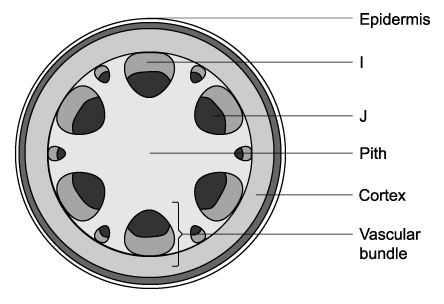The following diagram shows the internal structure of the heart.

A and C represents two heart chambers.
(i) Label chambers A and C.
[2]
(ii) State one difference in the function of A and C.
[1]
State the main difference between the blood found in the chambers on the left and right side of the heart.
Structure B plays an important role in the flow of blood through the heart.
(i) Label structure B.
[1]
(ii) State the role of structure B in the flow of blood through the heart.
[1]
Structure D is a wall of muscular tissue.
Describe the purpose of structure D in the heart.
Did this page help you?
























